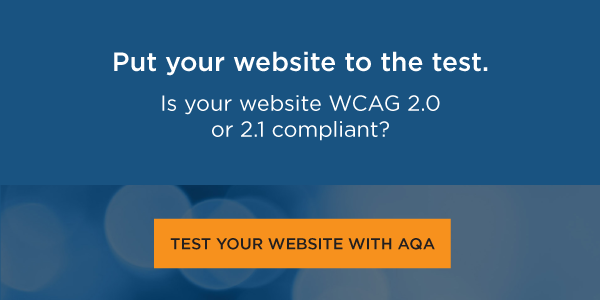Our bi-annual report is out and below are the highlighted trends we are seeing along with some color behind the numbers.
The full report is free. Download here.
The report data, images, and information can be shared freely but please remember to reference UsableNet as source and link to UsableNet.com
The report includes the full methodology behind the numbers. In short, we track federal and state ADA-related lawsuits. We download and read all ADA (physical and digital) dockets. The UsableNet Data Team separates out lawsuits that are brought against a website, app, or video. These digital-related lawsuits are tracked and become the source of our data.
So on to the highlights.
A Big Year Ahead
The number of lawsuits that claim a website, app, or video is in-accessible has increased 20% year over year. Based on midyear trends, 2021 may total more than 4,000 lawsuits. We are seeing new plaintiff law firms filing suits and broader claims being made, such as video inaccessibility.

Winn-Dixie makes a small dent
The recent Winn-Dixie case decision in Florida has reduced the number of cases filed in the 11th circuit since March. Yet, lawsuits continue in large numbers in New York and California. We expect California lawsuits to increase after the latest development in the Domino’s case.

E-Commerce is the main target, not just retail
E-commerce received by far the biggest number of lawsuits. it is a broad category that goes beyond traditional retailers. Due to the pandemic, the shift to digital commerce for all businesses has accelerated.

Smaller businesses in the crosshairs
As the number of lawsuits increases, companies of all sizes are being sued. Companies with revenue of less than 50 million received more lawsuits than their larger counterparts.

App suits grow across industries
As mobile use increases, more App-related lawsuits are being filed. Now nearly every industry has had lawsuits related to Apps.

Widgets and overlays add no protection
The number of lawsuits that include a feature of a widget as part of the claim is growing.

Predictions for the Year Ahead
At UsableNet we create these bi-annual reports to helps build awareness and knowledge about digital accessibility across all industries. We use our findings to inform our team ls on how to best support our clients to ensure accessibility while reducing legal risk.
Download the full report here.
While a lot can be learned from current numbers, much can change over the next six months.
For Winn-Dixie - the most recent appeal decision is not the final chapter. The plaintiff is already appealing, https://news.bloomberglaw.com/litigation/blind-winn-dixie-customer-further-appeals-website-access-ruling
We've covered the "Domino's Effect" in previous reports. California has a high number of cases. This is unlikely to change based on the most recent ruling last week, https://www.lflegal.com/2021/06/dominos-june-2021/
We'll continue to watch the numbers. Subscribe to stay updated.
UsableNet also provides regular updates from our legal partners on key cases and litigation trends, and what it means for our clients as well as the disability community. Watch our most recent webinar on the ADA litigation landscape for digital accessibility lawsuits, featuring attorneys from Lewis Brisbois here.
A trusted partner can help you improve accessibility and reduce legal risk. Contact UsableNet for a free consultation with an accessibility expert.










